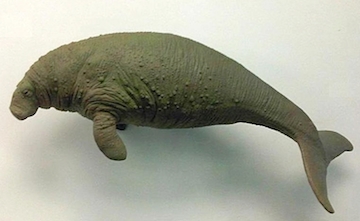401116-sea cow.jpg

Model of a Steller's sea cow in the Natural History Museum in London. Credit: Emoke Denes, Wikipedia, Attribution-Share Alike 2.5 Generic license
In the summer of 1741, a Russian expedition was in trouble. Led by Vitus Bering, it had crossed the northern Pacific Ocean from Siberia to Alaska, and was on its way home. But after months at sea, Bering and many of his men were suffering from scurvy. When a storm hit, they were shipwrecked on an island they’d discovered a few months before.
Bering and many of his men died. But the survivors found a previously undiscovered mammal on the island — a giant relative of the manatee. It marked salvation for the explorers — but doom for the animal. Less than three decades later, it was extinct.
It was named Steller’s sea cow after the expedition scientist, Georg Wilhelm Steller. He was the only scientist to ever describe it. He said the largest sea cows were up to about 30 feet long, and weighed several tons. They had tough skin that looked like tree bark, and they lived on kelp. And they weren’t afraid of the sailors.
That docile nature, combined with their meat and their fat, which could be used as both food and as oil for lamps, proved to be their doom. Only a couple of thousand of them were around at the time of their discovery, inhabiting a couple of small islands. Other expeditions stopped in to stock up on the giant creatures, often killing far more than they needed.
The Steller’s sea cow was defenseless. It was too slow to escape, and it couldn’t breed fast enough to replenish the population. By 1768, it had vanished — a creature that couldn’t survive its brief encounter with people.

